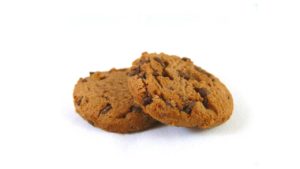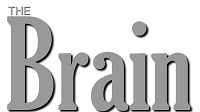 What is the brain’s reward system?
What is the brain’s reward system?
One of the most asked questions I receive is why people addicted to drugs or alcohol don’t stop. They know they are ruining their lives. They know they are losing their marriage, family, house and job. Why don’t they stop? It doesn’t make any sense.
The problem is we assume people are rational. For the most part we are, expect when we buy things on impulse, “diet” but still eat the last donut, or fall in love. Or when we are on drugs.
Caleb (not his real name) was a student of mine. During a lecture on drugs, he shyly sort-of-kinda raised his hand in a defense movement. He wasn’t looking at me or toward the projection screen, but he looked uncomfortable. I glanced at the slide and quickly changed it to a black screen. It had been a picture of a syringe, and it was triggering Caleb.
Addicts get easily triggered by stimuli even after years of being clean. A glass of dark looking liquid or a stein of beer can be unbearable for an alcoholic. Cigarettes or smoke can trigger smokers. Even the word heroin can trigger a former druggie.
We have a normal reward system that gets hijacked by drugs. Let’s take a common situation: the smell of coffee in the morning. I love the smell of coffee first thing in the morning. It’s comforting and reminds me of home. My parents brewed coffee every morning.
As you know, coffee contains caffeine, a weak stimulant that is GRAS (generally recognized as safe). Safety, of course, depends on dosage. A tablespoon of powdered caffeine (10 grams) will kill you. This is equivalent to 50-100 cups. Anything over 5 cups a day is probably unwise.
Caffeine is used worldwide but it is a psychoactive drug. It does impact your brain. It makes you feel more alert and less sleepy. The downside is that it doesn’t mean you don’t need your sleep, just that you’re not getting the normal signals telling you to slow down.
I ask my students to give up something for 20 days. Twenty days for 20 extra credit points. Many choose to give up caffeine. The results are predictable. They experience withdrawn symptoms, such as sleepiness, headaches, heart palpitations and general irritability. They get in fights with the significant others, have difficulty concentrating and do poorly on tests.
Maybe next time I should warn them. Naw, it’s a learning experience. I want them to understand how hard it is to give up a small stimulant like caffeine so they will empathize with the gigantic pull that super-stimulants like cocaine and meth have a person.
It’s the brain’s own reward system that is impacted by drugs. Most of the effects of caffeine are reversible. Many of the effects of other drugs are not.
What Does It Do?
The reward system tells when something is important. It can be important good or important bad. The system is a series of brain regions that work together to mark importance and indicate how important it is compared to other items.
When we eat a delicious meal, we raise the level of its importance. Our “yumminess” meter goes up. When we smell spoiled milk, our “yumminess” meter goes down. We have a hierarchy of rewards that continuously readjusts to the environment.
Rewards are internal states. We feel rewarded. We like it when people smile at us, say hello and tell us how much they like us. We use the reward system to maximize those positive feelings and minimize the negative ones that come from unpleasant experiences.
Some behaviors are intrinsically rewarding. Our desire for food helps keep us alive. Our desire for orgasm helps keep our species viable.
Other rewards are more extrinsic. We like to get a paycheck mostly for what it can buy us. The check itself is not as rewarding as the stuff we can get. This explains why we prefer to make purchases instead of put everything in savings.
Rewards do more than make us happy. They affect behavior.
If rewards are the inside feelings, the external factors are what B.F. Skinner called reinforcements. By nature, we move around and interact with our environment. The consequences of these behaviors increase or decrease our likelihood of doing them again. In other words, we use our internal reward system to track our external interactions.
When we gain something as a consequence of our behavior, Skinner calls it a positive, as in posit or deposit. It is something we get. Something added which we like (positive reinforcement) increases our likelihood of doing it again. Something added which we don’t like (positive punishment) decreases our likelihood of doing that same behavior again.
When we lose something as a consequence of behavior, it is a negative, as in negate. It is something taken away from us. When we like having it taken away (not having to do chores, for example), it is negative reinforcement. When we dislike having our car keys or privileges taken away, it is negative punishment.
The general nature of punishment is to stop behavior. The general tendency of reinforcement is to increase behavior. Naturally, what you and I like can be different. If someone gives you a chocolate chip cookie, it is a positive reinforcer or a positive punishment solely based on whether you like chocolate chip cookies.
That’s one of the problems with trying to reinforce someone else’s behavior. What the receiver likes can be vastly different from the giver’s point of view. Remember getting a Christmas present from someone else thought you’d like, rather than the present you really wanted?
Some people are motivated by money. But other workers might prefer a better job title, or a bit of respect for the hard work they do. Reinforcers are very personal.
Our brain adjusts its internal reward system to accommodate these environmental consequences. It does it directly by adjusting the priority hierarchy and indirectly by using environmental cues.
Let’s assume the reward system is like the symbols and notifications that appear on your car’s dashboard. It notifies you of important information, both good and bad.
You have one meter that shows how much good you feel. The more reward you receive, the more the meter signals pleasure. You have a separate meter that displays bad feelings (fear, anxiety, sadness, etc.). You can feel happy-anxious.
Your metaphorical car also keeps track of locations (environmental cues). It knows what you do in one neighborhood and what you don’t do in another. The brain makes associations between your reward level and all the environmental cues that surround you.
My brain stored the smell of coffee with cues about my family home, my age, and my family members. Your brain stores your favorite restaurant’s food, décor, smells, lighting levels, location, time of day and a thousand other details. It ties all of these associations together.
Your reward system tracks the amount of reward, its importance and salience (how much we notice it; brightness of dashboard lights). Salience is adjustable. Some days we notice details that have escaped us for months. Other days, we notice hardly anything.
We couple this combination of cues, salience, importance and reward level with an estimator. We predict both the size of future rewards and likelihood of them occurring. We play the lottery when the reward size is large, even when the likelihood of winning is low. Some suggest we also choose potential mates on the basis of attractiveness (reward size) and willingness to date us (likelihood). According to this theory, we might ask out someone less attractive because we predict they are likely to say yes.
All of this occurs automatically. The reward system of the brain tracks millions of cues, rewards, salience, importance levels and uses all of this data to predict future rewards, their likelihood and how to repeat those experiences.
Next we look at where the brain’s reward system is located.
 Click for more topics.
Click for more topics.